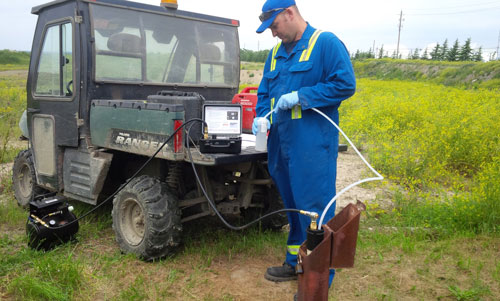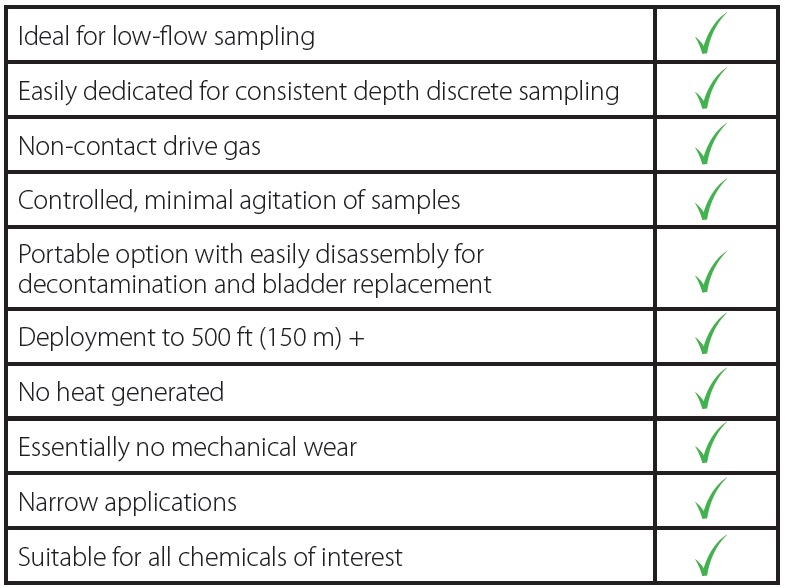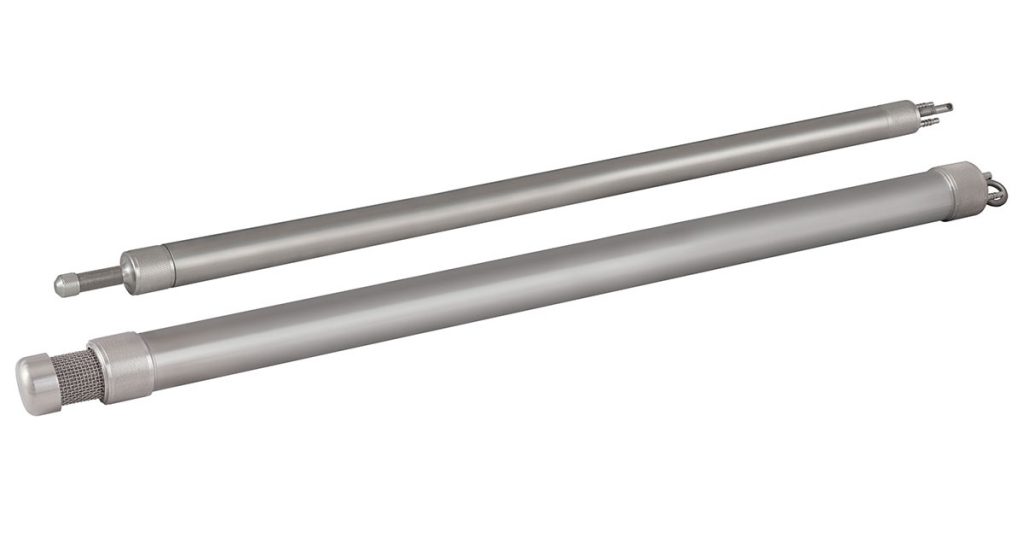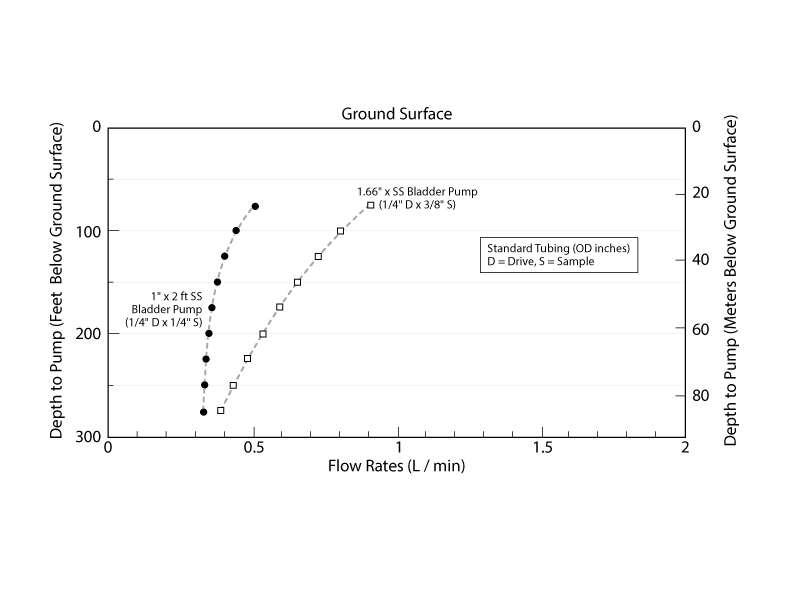| Download Technical Bulletin |
Defensible Data
We all know that bladder pumps are ideal for obtaining extremely accurate, representative groundwater samples. For this reason site regulators, owners, and consultants rely on bladder pumps for reproducible data that is defensible, time and time again.

Dedicated Bladder Pump Operation
Making the Right Choice
When selecting a groundwater sampler, there are some key factors to consider:
- Physical attributes of the well, including diameter
- Sampling protocol, e.g. calculated purge volumes
- Depth to water
- Sampling frequency
- Accessibly to the well for transporting equipment
- Well hydraulics – for recharge and recovery
- Turbidity and chemistry of concern
The aim is to collect a high quality groundwater sample as efficiently and economically as possible. Bladder pumps are recommended by EPAs worldwide for low flow sampling and groundwater collection for Volatile Organic Compound (VOC) analysis.
Perceived Negatives
Despite their benefits, misconceptions sometimes deter potential users from upgrading to a bladder pump. Perceived complexity of equipment and operation are misplaced on these highly portable, and easy to control instruments.
Proven Positives
Although there may be a high initial capital investment, the bladder pump will pay for itself through time savings and defensible data. The controller is only purchased once, and can be re-used on numerous sites and sampling applications. The air supply can be rented inexpensively. Dedication of customized, pre-assembled systems significantly reduce the time needed in the field for setup. If portable pumps are required, then pumps are easily disassembled for decontamination between sampling events.
Using low flow methods, only the sampling zone is purged, thus reducing purge volumes, sampling time, and disposal costs. High quality samples with no turbidity or de-gassing also cut down the need for sample filtering or repeated sampling.

Solinst Bladder Pumps
Solinst offers a Bladder Pump, which is versatile in design and application:
- Standard stainless steel pumps with Santoprene® bladders
- Lower cost PVC pump to sample for metals or in highly-corrosive environments
- Easy-to-replace bladder cartridges – no tools required
- 1.66″ (42 mm) diameter standard, or 1″ (25 mm) dia. for narrow applications
-
Effective up to 500 ft (150 m) below grade, and even lower using a drop tube
-
Operates effectively at almost any angle
-
Optional freeze protection available
-
Well cap set up for dedication, or portable version
-
Solinst Model 800 and 800M Low Pressure Packers to further reduce purge volumes
-
Pumps effectively in water at least 2” (50 mm) above pump inlet
-
Pumps with compression fittings (in place of tubing barbs) and stainless steel check balls are also available
-
‘One touch’ pre-sets, make operation easy

Solinst Model 407 1″ and 1.66″ dia. Stainless Stel Bladder Pumps
Sampling Tips
Determining the amount of applied pumping pressure to retrieve a sample is not difficult. 1 psi of pressure can raise a 2.3 ft column of water, which is about half of the column height of water in feet, expressed as psi. e.g. if the Bladder Pump’s intake is at 100 ft below ground surface, you would require approximately 50 psi of pressure to bring a sample to ground surface, add an extra 20 psi to allow for line loss.
When selecting a pump controller, make sure your choice has easy to follow pre-set pumping options. This helps take the guesswork out of determining suitable drive and vent times. For example, when sampling within a well with a ‘fast’ recharge rate, select a ‘high’ cycle rate (~6 sec/cycle of drive and vent times), versus a ‘slow’ recharge application, where a cycle rate of 115 seconds may be more suitable.
In addition to pre-sets and the option to save user settings, select a controller that also provides a manual mode for operation. With the sample discharge tube submerged into a cup of water, hold down the manual control button and count the number of seconds until you see the air bubbles stop – this indicates that the bladder is completely squeezed. Use this elapsed time for the drive time. Doubling the time is a good place to start for the vent time.

Pumping rates vary depending on depth of water.
Summary
Solinst Bladder Pumps give defensible data due to consistent, high quality samples in all types of applications. They have great potential to provide both time and cost savings. The advantages far outweigh the negative assumptions that may be misplaced on these instruments. The time spent in customizing and operating these systems should be considered a wise investment. They provide many benefits time and time again, in the long term.
Want to add a Baldder Pump to your groundwater monitoring project? Get a Quote!
